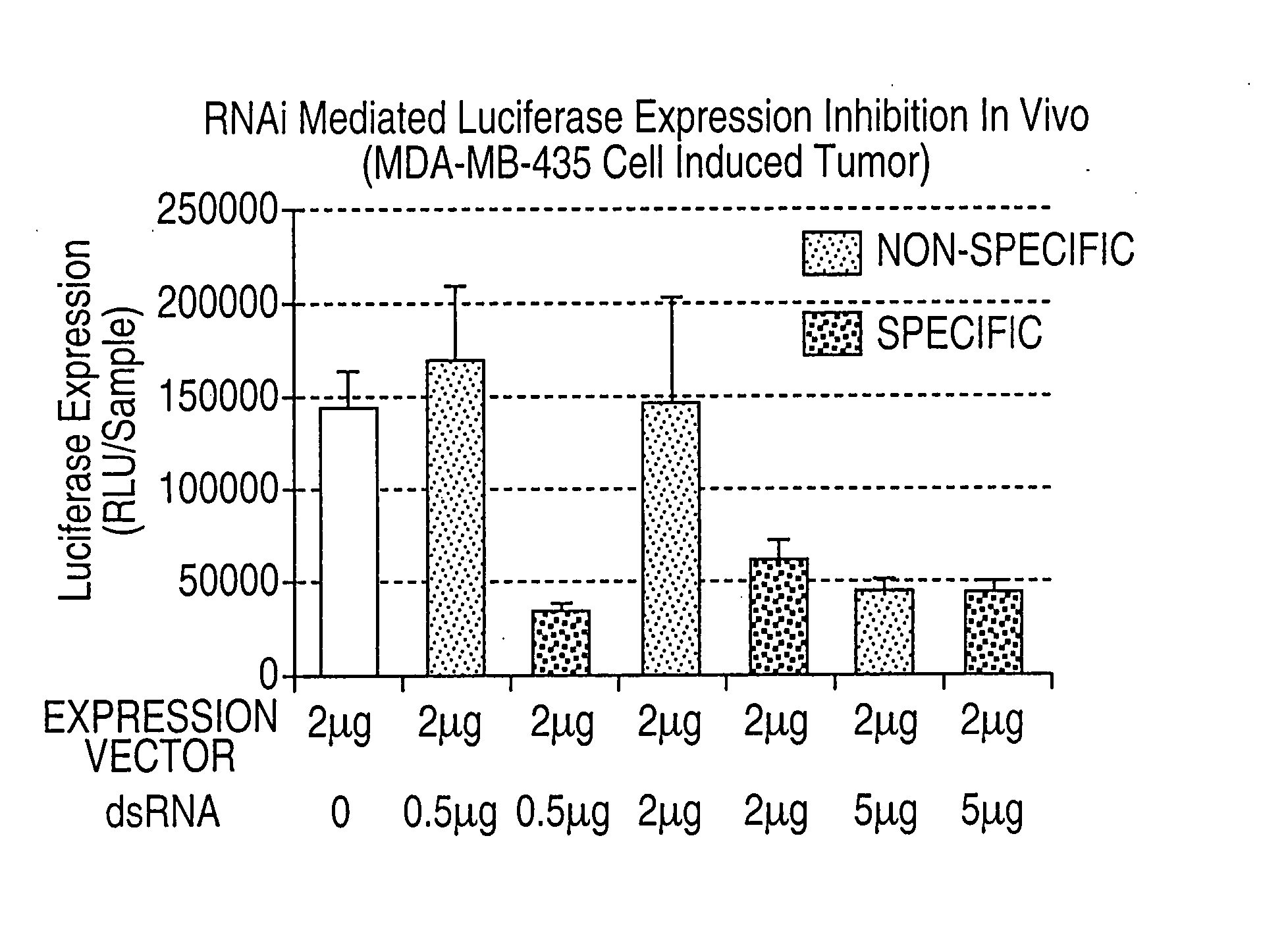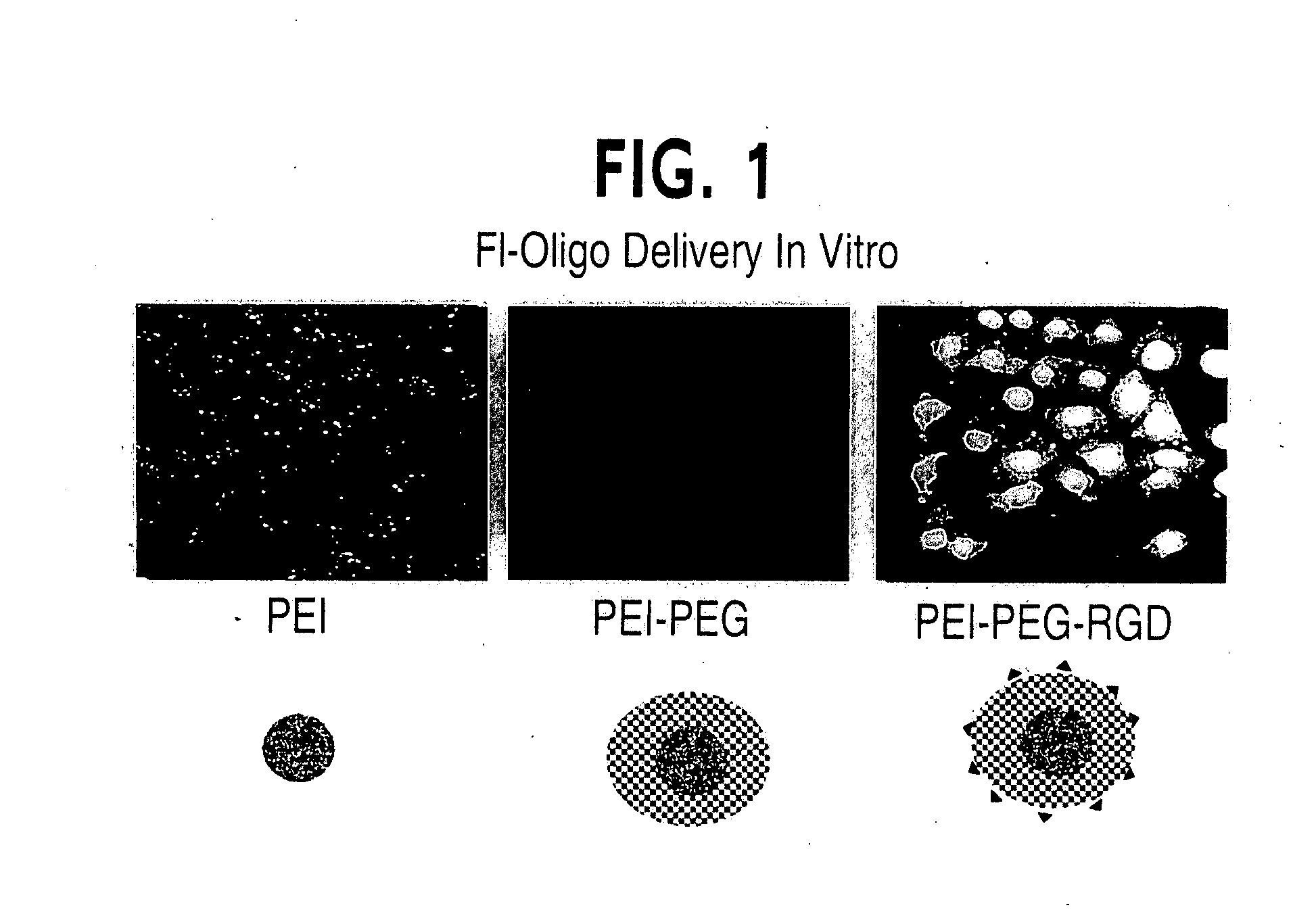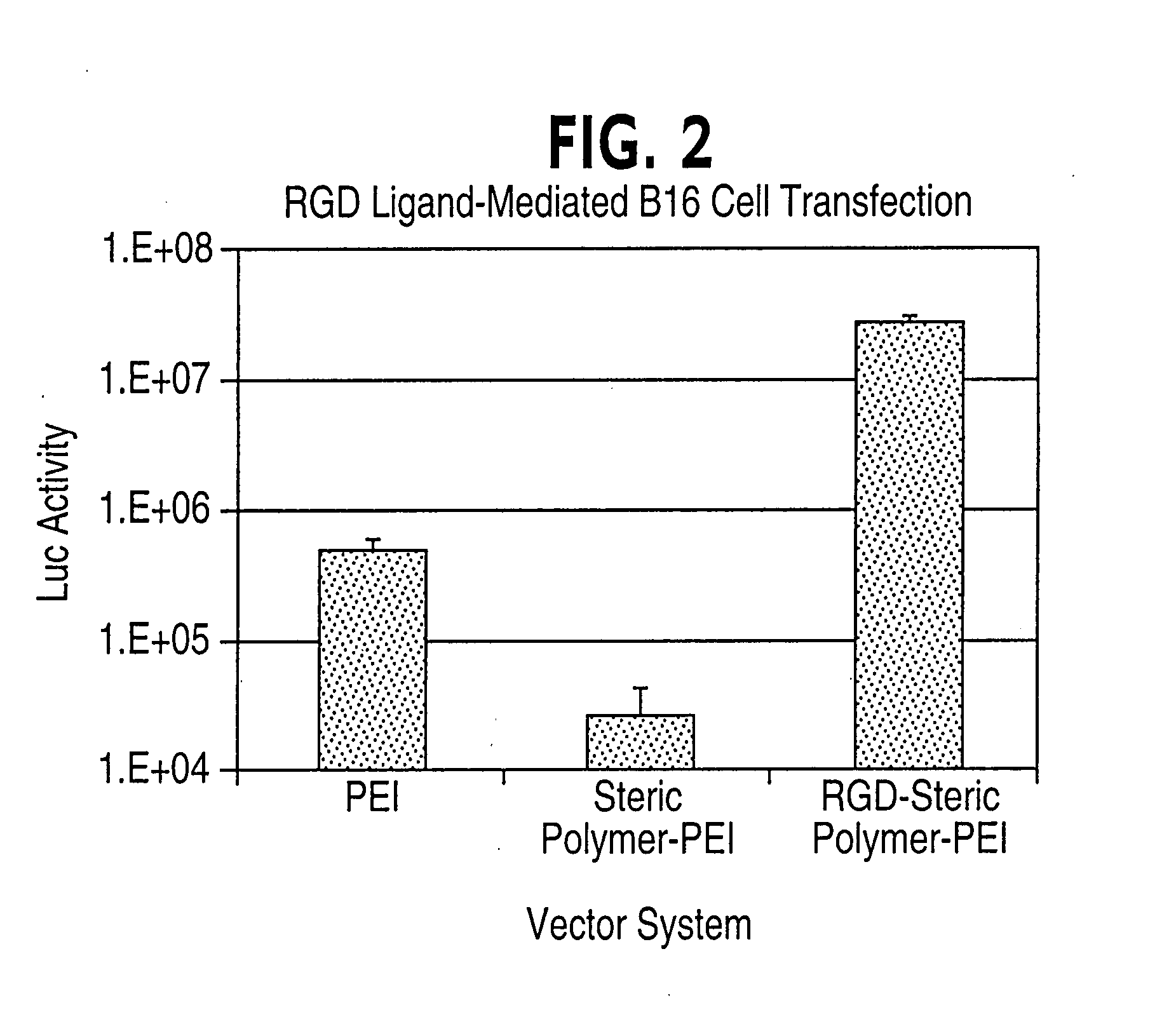Therapeutic methods for nucleic acid delivery vehicles
a technology of nucleic acid and delivery vehicle, which is applied in the direction of drug compositions, antibacterial agents, peptide/protein ingredients, etc., can solve the problems of significant toxicity problems, adverse effects on the therapeutic application of gene-based medicines, and the inability of vectors to meet the needs of patients, so as to reduce or increase the expression of a protein or polypeptide, and decrease the expression of an oncogen
- Summary
- Abstract
- Description
- Claims
- Application Information
AI Technical Summary
Benefits of technology
Problems solved by technology
Method used
Image
Examples
example 1
PEI-PEG Conjugates and Effect of PEGylation on the Size and Stability of PEI / DNA Complexes
[0085] PEI (25 kD) was obtained from Aldrich Chemical Company (Milwaukee, Wis.) and Methoxy poly (ethylene glycol)-nitrophenyl carbonate (MW 5000) from Shearwater Polymers (Birmingham Ala.). Concentration of PEI solutions was determined using a calorimetric TNBS assay for primary amine content. DNA concentration was determined spectrophotometrically using a molar extinction coefficient of 13,200 mol-1 cm-1 per base pair at 260 nm (1 OD=50 μg DNA). Particle size of DNA complexes was determined by light scattering with a Coulter N4 instrument. PEI-PEG conjugates were prepared by standard chemical methods. Briefly, 10 mg of PEI was dissolved in 100 mM NaHCO3 at pH 9 and 61 mg of methoxy-PEG5000-nitrophenyl carbonate (sufficient to modify 5% of PEI residues) added and allowed to react for 16 hours at 4° C. The reaction mixture was then dialyzed extensively against 250 mM NaCl followed by water usi...
example 2
PEI-PEG-RGD Conjugates and Effect of Lipand on DNA Complexes
[0089] RGD peptide with sequence, ACR GDM FGC A, cyclized through the Cys sidechains and purified to >90% by reverse phase HPLC (C18 column) was obtained from Genemed Synthesis, S. San Francisco. 16.8 mg of the RGD peptide was dissolved in 100 mM HEPES buffer at pH 8.0. To this solution, 41 mg of VS-PEG3400-NHS (Shearwater Polymers) dissolved in dry DMSO (100 μl) was added slowly (over 30 minutes) with stirring using a syringe pump. The reaction mixture was kept stirring at room temperature for another 7 hours. 5 mg of PEI solution after adjusting the pH to 8.0 was added to the above reaction mixture. The reaction mixture was adjusted to pH 9.5 and stirred at room temperature for 4 days. At the end of the reaction, the reaction mixture was lyophilized. The sample was redissolved in 5 mM HEPES at pH 7.0 containing 150 mM NaCl and passed through a G-50 gel filtration column using an elution buffer containing 5 mM HEPES and 1...
example 3
Complexes of Synthetic Vector Reagents with Nucleic Acid
[0095] An important hurdle largely neglected in the field is characterization of the colloids formed by the condensing agent and nucleic acid. A good understanding of the nature of the colloids formed is lacking. We have developed formulations and processes to form complexes using physical characterization of the colloids. Our processes have been developed using plasmids (up to 1 mg DNA). Homogeneity of the colloidal complexes is determined using light scattering, zeta potential, and microscopy. The impact of improved homogeneity can be observed from in vivo expression and toxicity. A process has been developed which is scalable, operator independent, and optimized to prepare homogenous 100 nm particles using a flow-through static mixer. This size goal was chosen for two reasons. First, 100 nm average size particles have the best tumor targeting (based on liposome studies). Second, 100 nm average size particles can be sterile ...
PUM
| Property | Measurement | Unit |
|---|---|---|
| Molar density | aaaaa | aaaaa |
| Molar density | aaaaa | aaaaa |
| Molar density | aaaaa | aaaaa |
Abstract
Description
Claims
Application Information
 Login to View More
Login to View More - R&D
- Intellectual Property
- Life Sciences
- Materials
- Tech Scout
- Unparalleled Data Quality
- Higher Quality Content
- 60% Fewer Hallucinations
Browse by: Latest US Patents, China's latest patents, Technical Efficacy Thesaurus, Application Domain, Technology Topic, Popular Technical Reports.
© 2025 PatSnap. All rights reserved.Legal|Privacy policy|Modern Slavery Act Transparency Statement|Sitemap|About US| Contact US: help@patsnap.com



